
资料下载

距离装置的程序执行
描述
为什么需要保持社交距离?这个项目的动机是什么?
COVID-19(也称为新型冠状病毒)是一种致命疾病,已感染超过 2400 万人并导致超过 80 万人死亡。
仅在美国,就有600 万例病例。据Worldometers.info 称,最近 COVID-19 病例一直在增加。

疾病预防控制中心建议保持社交距离,这是一种人们分开 6 英尺的程序,除非他们是同一个家庭的成员。那么,作为一个社区,我们如何使用技术来执行这个程序呢?这就是这个项目的动机。
成本
为了让每个人都可以使用这个项目,我们希望确保成本尽可能低。
一台设备的成本:
- Arduino Nano--10 售价 36.49 美元,因此每个售价 3.65 美元
- HC-05--2 为 12.5 美元,因此每个为6.25 美元
- LCD--2 售价 6.49 美元,因此每个售价 3.25 美元
- 有源蜂鸣器——20 个,9.59 美元,所以每个是0.48 美元
- 10K 欧姆电位器——20 个,6.39 美元,所以每个0.32 美元
- 220 欧姆电阻器 - 100 个 5.69 美元,因此每个0.06 美元
- 9V 电池——8 块10.99 美元,所以每块 1.37 美元
- 9V 电池连接器面包板--40 个,售价 6.48 美元,因此每个售价 0.16 美元
总计高达15.54 美元。这是非常令人印象深刻的,因为这可以挽救无数生命。
准备步骤:安装库
第一步是安装 LCD 库,您将需要这两个库。这可能预装在 Arduino IDE 上,但可能不在某些版本上。
转到工具>管理库。在这里,搜索“液晶”。
我们要查找的库是列表中的第一个。如果您还没有安装它。
还使用了 SoftwareSerial 库,但它已经预先安装。
第 1 步:将 HC-05 配置为 AT 模式
第一步是将 HC-05 配置为 AT 模式。在这里,我们可以执行 AT+INQ 命令来扫描其他设备。
需要两个或更多设备才能相互扫描。在所需的部分中描述了一种“设备”。
对于此步骤,设备应按如下方式接线:

有两种 HC-05 设备:一种带有“KEY”引脚不带按钮,一种带有“EN”引脚带按钮
AT模式HC-05无按键:
如果 KEY 引脚连接到 +5V DC,它应该自动处于 AT 模式。
AT 模式 HC-05 带按钮
在这种情况下,EN 引脚应连接到 +5V DC。插入 Arduino Nano 时,按下按钮,插入设备,然后松开。这应该激活 AT 模式。
将此代码复制并粘贴到 Arduino IDE 中。
#include <SoftwareSerial.h>
SoftwareSerial mySerial(10,11);
void setup()
{
Serial.begin(9600);
mySerial.begin(38400);
Serial.println("Enter AT commands:");
delay(2000);
}
void loop()
{
// Keep reading from HC-05 and send to Arduino Serial Monitor
if (mySerial.available()){
Serial.write(mySerial.read());}
// Keep reading from Arduino Serial Monitor and send to HC-05
if (Serial.available()){
mySerial.write(Serial.read());}
}
从本质上讲,这会将您在串行监视器中键入的任何内容打印到 HC05,等待消息并打印该消息。
运行代码。
运行代码:
打开串行监视器。
当“Enter AT commands:”出现时,输入“AT”并按下回车键。您应该会收到一条消息说“OK”
键入“AT+NAME”并显示名称。
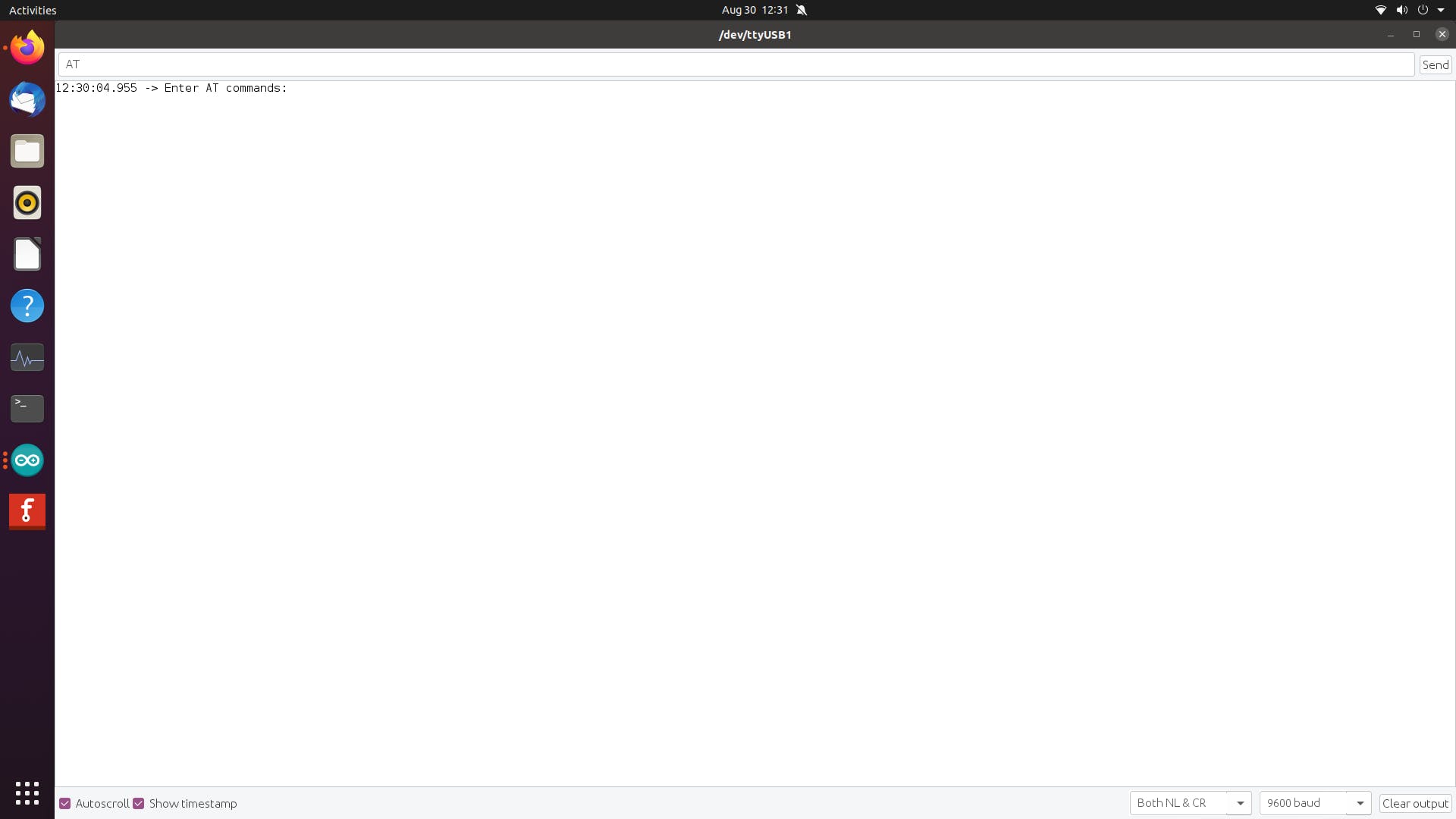
值
为了获得设备之间的距离,我们需要 rssi 值。要获取 rssi 值,我们需要执行 AT+INQ 命令。但是,在此之前还有一些命令要执行,一一执行:
- AT+复位
- AT+初始化
- AT+IAC=9e8b33
- AT+CLASS=0
- AT+INQM=1, 9, 48
- AT+INQ
这是执行完所有 6 个命令后串行监视器的外观。(一步步)
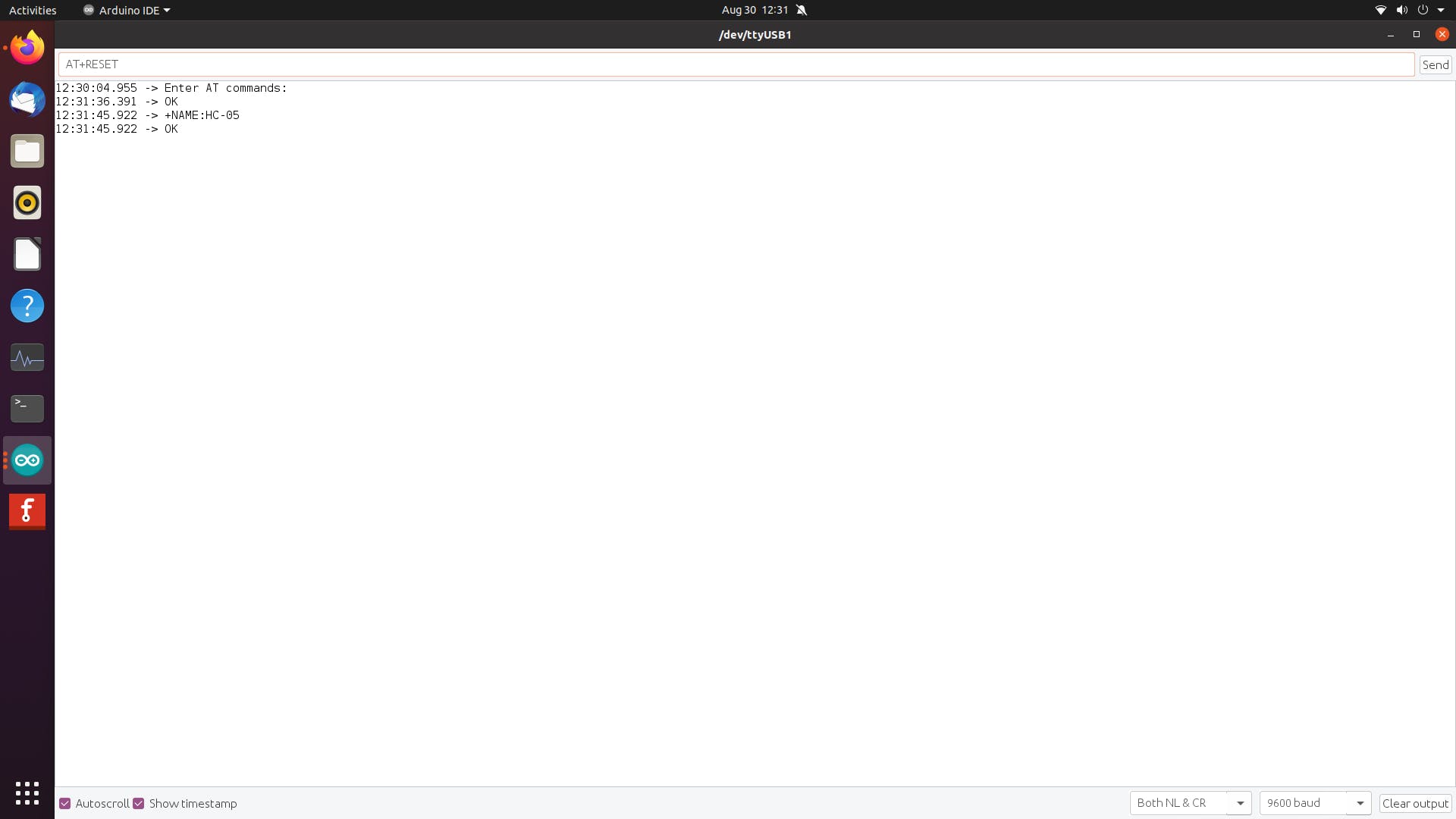
请注意,当我们执行 AT+INQ 命令时,它会显示 +INQ,后跟地址、类别,然后是 RSSI 值。RSSI 值是最后 4 个字符。请注意,这是十六进制;要将其转换为十进制,我们需要使用带符号的二进制补码格式。
如果得到的 RSSI 值为 7FFF,请尝试再次执行上述命令。
如果 rssi 值以 F 开头,那么你很好。
第 2 步:转换 Rssi 值
要转换 rssi 值,我们需要创建一个新函数来执行此操作。
将此代码复制并粘贴到 Arduino IDE
#include
SoftwareSerial mySerial(10,11);
void setup()
{
Serial.begin(9600);
mySerial.begin(38400);
Serial.println("Enter AT commands:");
delay(2000);
}
unsigned int hexToDec(String hexString) {
unsigned int decValue = 0;
int nextInt;
for (int i = 0; i < hexString.length(); i++) {
nextInt = int(hexString.charAt(i));
if (nextInt >= 48 && nextInt <= 57) nextInt = map(nextInt, 48, 57, 0, 9);
if (nextInt >= 65 && nextInt <= 70) nextInt = map(nextInt, 65, 70, 10, 15);
if (nextInt >= 97 && nextInt <= 102) nextInt = map(nextInt, 97, 102, 10, 15);
nextInt = constrain(nextInt, 0, 15);
decValue = (decValue * 16) + nextInt;
}
return decValue;
}
void loop()
{
// Keep reading from HC-05 and send to Arduino Serial Monitor
if (mySerial.available()){
String x = String(mySerial.readString());
int slashn = x.indexOf("\n");
Serial.println(slashn);
int xlen = x.length()/(slashn+1);
if (x.endsWith("OK\r\n")) {
x = x.substring(0, x.length() - 4);
}
for (int i = 0; i < xlen; i++) {
if (i != 0) {
x = x.substring(slashn+1);
}
slashn = x.indexOf("\n");
String rssi = x.substring(slashn-5, slashn-1);
int decNO = hexToDec(rssi);
Serial.println(decNO);
}
// Keep reading from Arduino Serial Monitor and send to HC-05
if (Serial.available()){
mySerial.write(Serial.read());
}
}}
这个程序是如何工作的
首先,它检测数据是否可用。然后,它将数据复制到一个字符串 (X) 并检测 INQ 行的结尾(注意所有 INQ 数据都是一个字符串,这需要为单行 INQ 数据分成不同的字符串)。
请注意一行是 +INQ:ADDR, CLASS, RSSI\r\n
通过 for 循环,它正在检测单独的行并删除已经检测到的行。RSSI 值是倒数第六到第三个(包括 \r\n),因此是 substring(slashn-5, slashn-1); 我们称结尾为“斜线 n”,因为那是结尾,斜线 n。
当你运行这个程序时,你应该在+INQ....之后得到一个十进制的RSSI值。这应该是一个负数。数字越大,两个设备越接近。
在下一步中,我们将向您展示如何将此数据报告给 LCD。我们还将了解如何检测家庭成员
第三步:检测家庭成员
通过设备的地址可以检测到家庭成员。地址从第 5 个索引开始,到第 13 个结束,即 substring(5, slashn-11)。
有了这个,我们还可以统计局外人和家庭成员的数量。
对于外人,可以测量距离,看是否为 6 英尺。通过将设备放在 6 英尺处进行一系列试验后,我们确定为 76.91。

这是代码。
#include
SoftwareSerial mySerial(10, 11); // RX, TX
void setup() {
Serial.begin(9600);
Serial.println("Enter AT commands:");
mySerial.begin(38400);
}
unsigned int hexToDec(String hexString) {
unsigned int decValue = 0;
int nextInt;
for (int i = 0; i < hexString.length(); i++) {
nextInt = int(hexString.charAt(i));
if (nextInt >= 48 && nextInt <= 57) nextInt = map(nextInt, 48, 57, 0, 9);
if (nextInt >= 65 && nextInt <= 70) nextInt = map(nextInt, 65, 70, 10, 15);
if (nextInt >= 97 && nextInt <= 102) nextInt = map(nextInt, 97, 102, 10, 15);
nextInt = constrain(nextInt, 0, 15);
decValue = (decValue * 16) + nextInt;
}
return decValue;
}
void loop()
{
while (!mySerial.available()) {}
while (mySerial.available()) {
String x = String(mySerial.readString());
int slashn = x.indexOf("\n");
Serial.println(slashn);
int nod = 0;
int countf = 0;
int counto = 0;
int countd = 0;
int xlen = x.length()/(slashn+1);
if (x.endsWith("OK\r\n")) {
x = x.substring(0, x.length() - 4);
}
for (int i = 0; i < xlen; i++) {
if (i != 0) {
x = x.substring(slashn+1);
}
slashn = x.indexOf("\n");
String rssi = x.substring(slashn-5, slashn-1);
int decNO = hexToDec(rssi);
Serial.println(x.substring(5,slashn-11));
if (x.substring(5, slashn-11) == "FAMILYADDR") {
countf++;
}
else {
counto++;
if (decNO > -76.91) {
countd++;
}
}
if (decNO > -76.91) {
Serial.println("near");
}
else {
Serial.println("far");
}
Serial.println(decNO);
}
Serial.println("Family: " + String(countf) + " Outsider: " + String(counto) + " Danger: " + String(countd));
}
delay(100);
}
countf 是家庭成员的数量,counto 是外来者的数量,countd 是小于 6 英尺的危险外来者的数量。
将 FAMILYADDR 替换为您尝试扫描的“家庭”设备。任何外部设备都将自动计为外部设备。对于多个设备,使用 || 列出多个设备的操作。
运行此程序时,您将看到列出的设备地址以及转换后的 RSSI。扫描完所有内容后,它将显示家庭、局外人和危险计数。
第 4 步:向 LCD 报告
当该设备在现实世界中实施时,设备持有者必须有办法知道 rssi 值以及他们是否有感染 COVID-19 的危险。
如图所示为 LCD 接线:
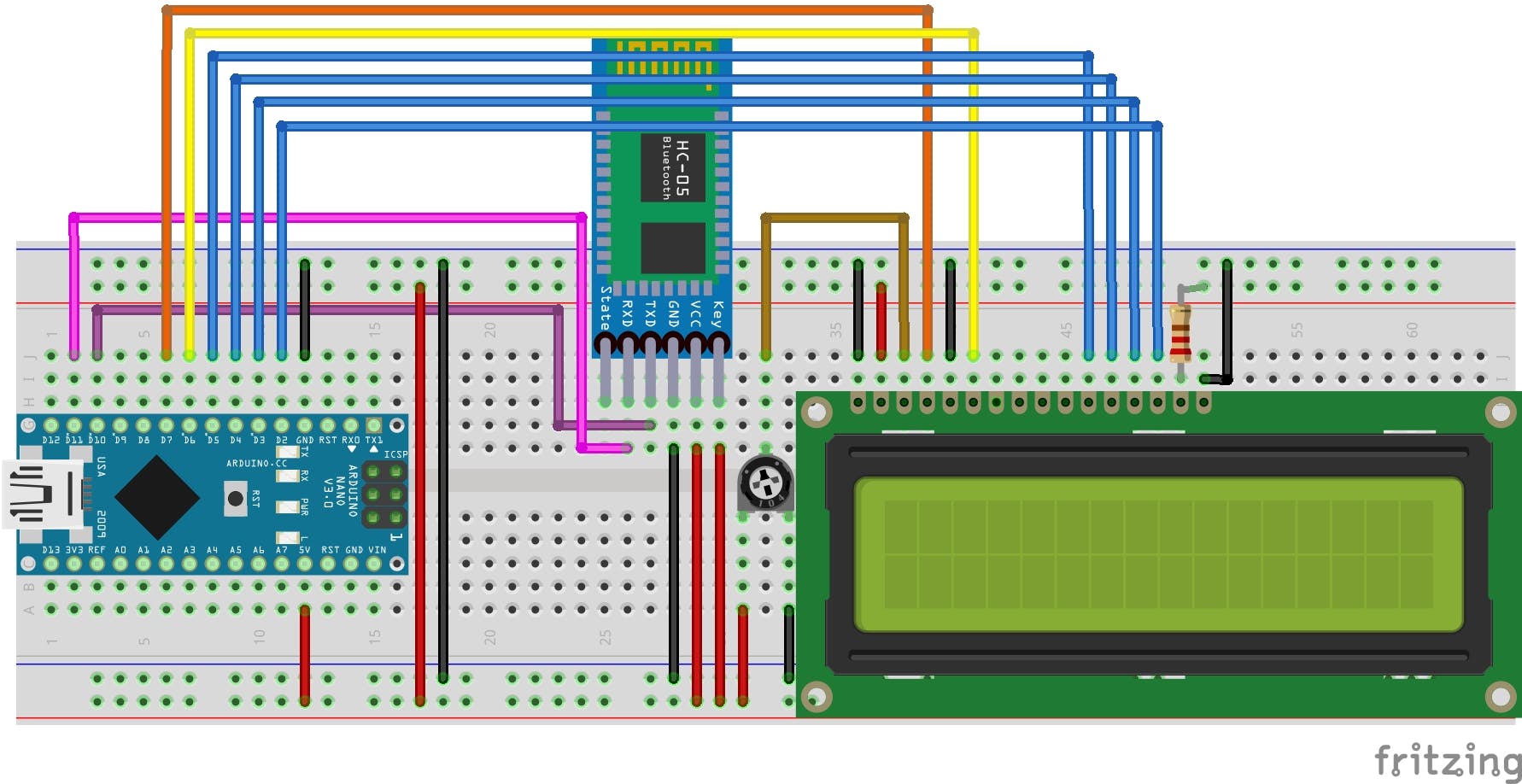
接下来,将此代码复制并粘贴到 Arduino IDE 中。运行。
#include
SoftwareSerial mySerial(10, 11); // RX, TX
#include
// initialize the library with the numbers of the interface pins
LiquidCrystal lcd(7, 6, 5, 4, 3, 2);
int buttonstate = 0;
void setup() {
lcd.begin(16, 2);
Serial.begin(9600);
Serial.println("Enter AT commands:");
}
unsigned int hexToDec(String hexString) {
unsigned int decValue = 0;
int nextInt;
for (int i = 0; i < hexString.length(); i++) {
nextInt = int(hexString.charAt(i));
if (nextInt >= 48 && nextInt <= 57) nextInt = map(nextInt, 48, 57, 0, 9);
if (nextInt >= 65 && nextInt <= 70) nextInt = map(nextInt, 65, 70, 10, 15);
if (nextInt >= 97 && nextInt <= 102) nextInt = map(nextInt, 97, 102, 10, 15);
nextInt = constrain(nextInt, 0, 15);
decValue = (decValue * 16) + nextInt;
}
return decValue;
}
void loop()
{
while (!mySerial.available()) {}
while (mySerial.available()) {
String x = String(mySerial.readString());
int slashn = x.indexOf("\n");
Serial.println(slashn);
int nod = 0;
int countf = 0;
int counto = 0;
int countd = 0;
int xlen = x.length()/(slashn+1);
if (x.endsWith("OK\r\n")) {
x = x.substring(0, x.length() - 4);
}
for (int i = 0; i < xlen; i++) {
if (i != 0) {
x = x.substring(slashn+1);
}
slashn = x.indexOf("\n");
String rssi = x.substring(slashn-5, slashn-1);
int decNO = hexToDec(rssi);
lcd.setCursor(0, 1);
lcd.print("RSSI:" + String(decNO));
Serial.println(x.substring(5,slashn-11));
if (x.substring(5, slashn-11) == "20:2:2011FB") {
countf++;
}
else {
counto++;
if (decNO > -76.91) {
countd++;
}
}
if (decNO > -76.91) {
Serial.println("near");
}
else {
Serial.println("far");
}
Serial.println(decNO);
}
Serial.println("Family: " + String(countf) + " Outsider: " + String(counto) + " Danger: " + String(countd));
if (counto/2 lcd.setCursor(10, 1);
lcd.print("DANGER");
Serial.println("DANGER");
}
else {
lcd.setCursor(10, 1);
lcd.print(" ");
Serial.println("Fine");
}
}
delay(100);
})>
我们觉得我们需要解释背后的逻辑counto/2。请注意,76.91 是平均 rssi 值,这意味着一半的值超过,一半低于。这确保了不超过 5 个值低于 76.91;否则它会说“危险”。<>
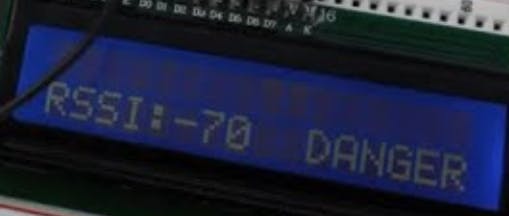
第 5 步:蜂鸣器
在过马路等场景中看设备是很危险的。如果距离小于 6 英尺,我们使用有源蜂鸣器发出警报。只有当任何一个人与另一个人的距离超过 6 英尺时才会关闭。将蜂鸣器连接到 D13,如图所示:
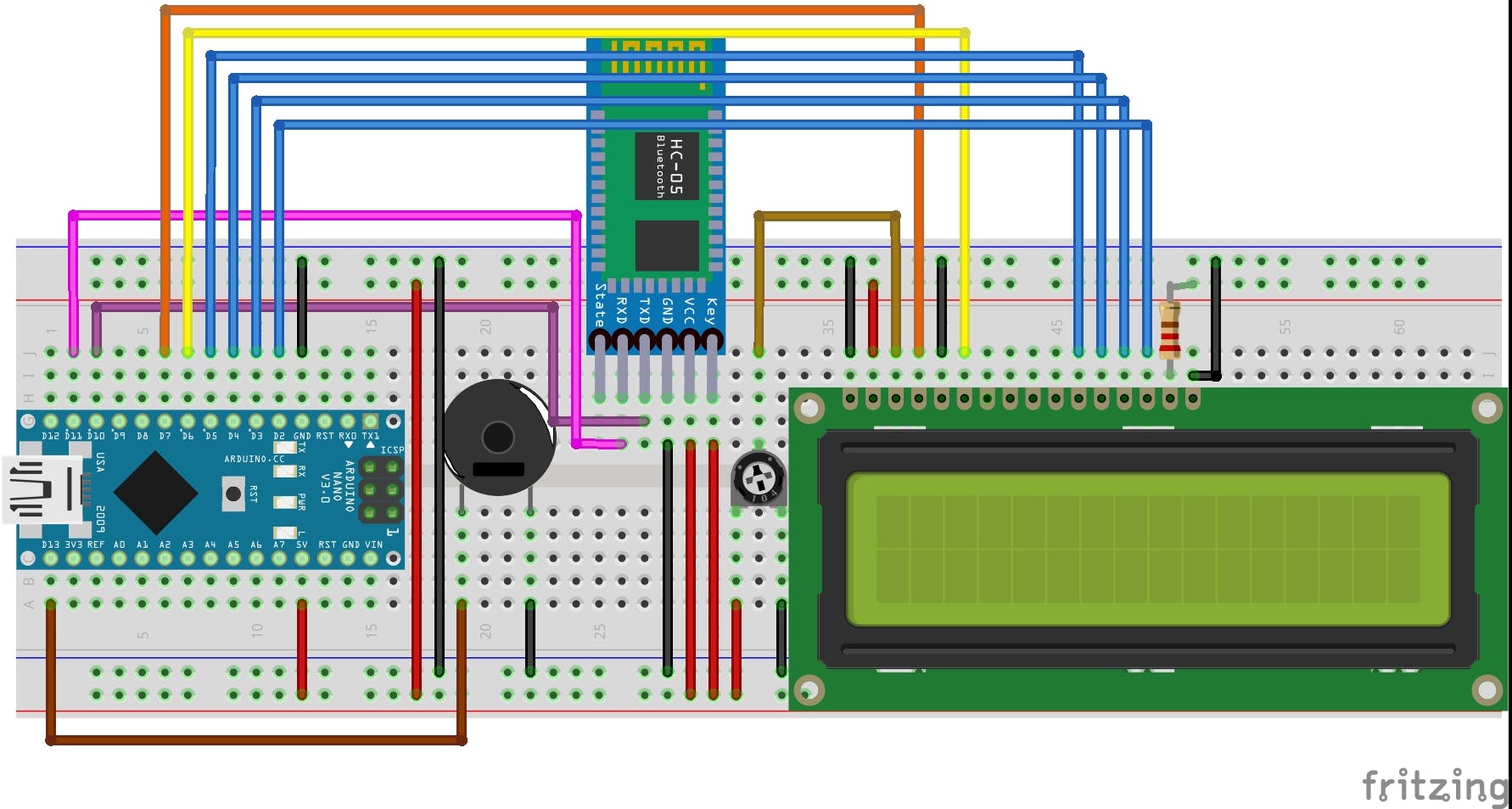
1 / 2
复制并粘贴代码,如图
#include
SoftwareSerial mySerial(10, 11); // RX, TX
#include
// initialize the library with the numbers of the interface pins
LiquidCrystal lcd(7, 6, 5, 4, 3, 2);
int buttonstate = 0;
void setup() {
pinMode(13,OUTPUT);
lcd.begin(16, 2);
Serial.begin(9600);
Serial.println("Enter AT commands:");
mySerial.begin(38400);
}
unsigned int hexToDec(String hexString) {
unsigned int decValue = 0;
int nextInt;
for (int i = 0; i < hexString.length(); i++) {
nextInt = int(hexString.charAt(i));
if (nextInt >= 48 && nextInt <= 57) nextInt = map(nextInt, 48, 57, 0, 9);
if (nextInt >= 65 && nextInt <= 70) nextInt = map(nextInt, 65, 70, 10, 15);
if (nextInt >= 97 && nextInt <= 102) nextInt = map(nextInt, 97, 102, 10, 15);
nextInt = constrain(nextInt, 0, 15);
decValue = (decValue * 16) + nextInt;
}
return decValue;
}
void loop()
{
while (!mySerial.available()) {}
while (mySerial.available()) {
String x = String(mySerial.readString());
int slashn = x.indexOf("\n");
Serial.println(slashn);
int nod = 0;
int countf = 0;
int counto = 0;
int countd = 0;
int xlen = x.length()/(slashn+1);
if (x.endsWith("OK\r\n")) {
x = x.substring(0, x.length() - 4);
OK = 1;
}
for (int i = 0; i < xlen; i++) {
if (i != 0) {
x = x.substring(slashn+1);
}
slashn = x.indexOf("\n");
String rssi = x.substring(slashn-5, slashn-1);
int decNO = hexToDec(rssi);
lcd.setCursor(0, 1);
lcd.print("RSSI:" + String(decNO));
Serial.println(x.substring(5,slashn-11));
if (x.substring(5, slashn-11) == "20:2:2011FB") {
countf++;
}
else {
counto++;
if (decNO > -76.91) {
countd++;
}
}
if (decNO > -76.91) {
Serial.println("near");
}
else {
Serial.println("far");
}
Serial.println(decNO);
}
Serial.println("Family: " + String(countf) + " Outsider: " + String(counto) + " Danger: " + String(countd));
if (counto/2 lcd.setCursor(10, 1);
lcd.print("DANGER");
Serial.println("DANGER");
digitalWrite(13,HIGH);
}
else {
lcd.setCursor(10, 1);
lcd.print(" ");
Serial.println("Fine");
digitalWrite(13,LOW);
}
}
delay(100);
})>
运行代码时,如果距离小于 6 英尺,设备会发出嗡嗡声,超过 6 英尺时设备会正常运行。
第 6 步:设备独立性(无计算机)
如果在现实世界中实现,该设备必须在没有计算机的情况下运行并发送命令。
话虽如此,9V 电池必须提供必要的电压。
请注意,可能需要一点透明胶带将电池粘贴到面包板的背面。这使设备更易于握持。
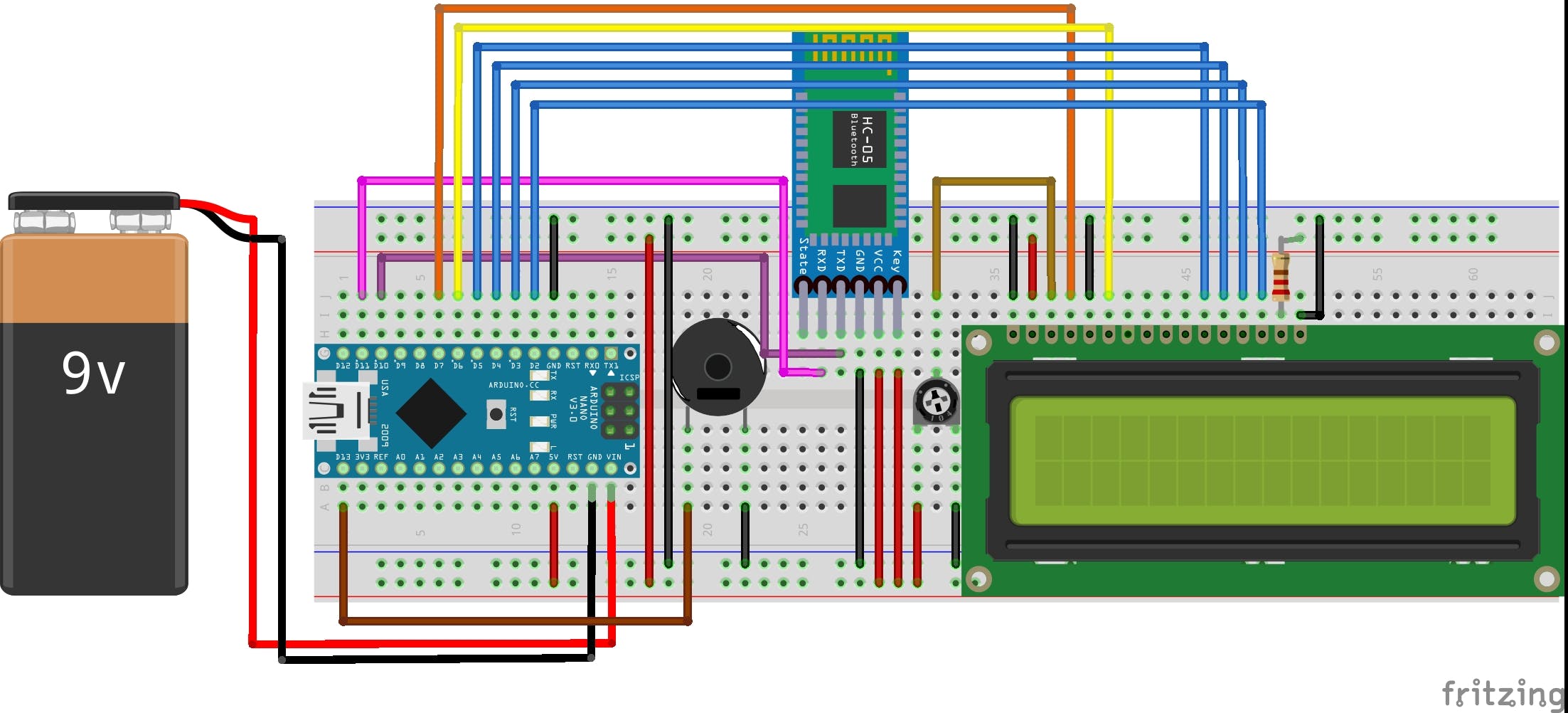
1 / 2
。
声明:本文内容及配图由入驻作者撰写或者入驻合作网站授权转载。文章观点仅代表作者本人,不代表电子发烧友网立场。文章及其配图仅供工程师学习之用,如有内容侵权或者其他违规问题,请联系本站处理。 举报投诉
- 相关下载
- 相关文章






